Departing Geneva by train, we arrived in Bern just after noon. Somewhere along the way we crossed a line of cultural divide. In Geneva, French is the principal language; signs are in French & English and announcements are in French (with occasional English subtitles). As the train was pulling into Bern, the announcement was in German. The signs are in German and there are no English subtitles. Even the architecture looks German; well at least according to my untrained eye. Having spent a week in Munich and with visits to Frankfurt and Berlin at other times – this place looked more German than the other places we’d been to in Switzerland. But the weather was perfect – so what the hell!
We took a bus from the station and were soon unpacking our bags in a third floor apartment overlooking the main street in the centre of the old town. The apartment was an Airbnb booking and belonged to a lady who taught music and played cello & piano. We thought she’d just nipped out to get something from the shop because the rooms were not “private” like our previous Airbnb experiences. Her personal items were strewn everywhere (in neat-ish sort of piles) but she hadn’t made much (if any) effort to prepare for our visit. Making the most of the weather, we set off in search of adventure.
The Zytglogge (Clock Tower) served as Bern’s first western city gate from 1191 till 1256. The ornate astronomical clock with its moving figures was added in 1530. This tower was about 150 metres up the street from our apartment.
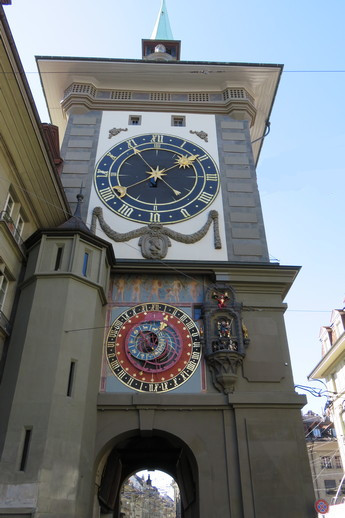
Bern has had a close relationship with the bear since its foundation. According to legend, the city owes its name to the animal. Consequently, bears appear everywhere; on flags, fountains and buildings. If you’re lucky you might also be able to catch sight of a real bear in a park built just for them and open to the public. Seriously, there are currently three bears in residence. 🙂
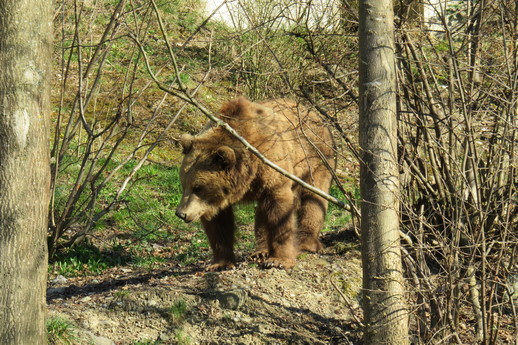
The next day we walked to the zoo through a large park across the River Aare.
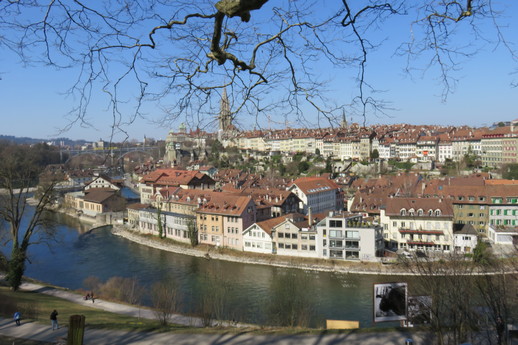
We had to do some hill climbing to get there first.
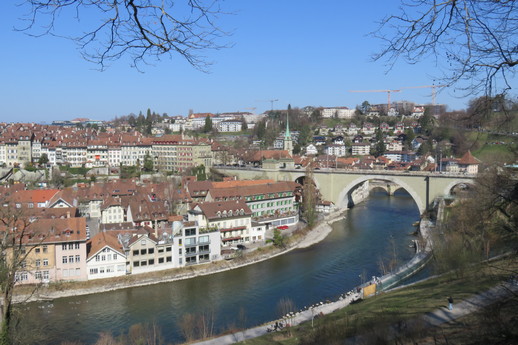
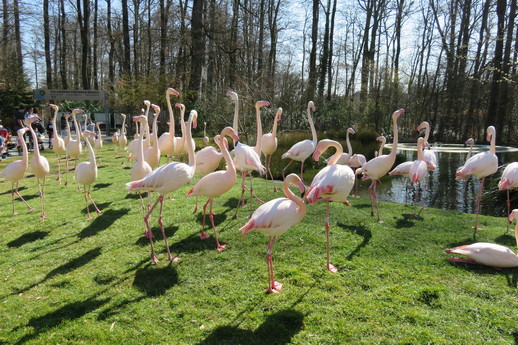
We rented some bikes and rode along the river for an hour or so – it was just perfect. I had a regular bike and Chris scored an electric bike. I tried it out and the motor assistance appears to be a function of how hard you push on the pedals. A light touch and you are pretty much doing it by yourself; a bit more effort and you’re off like a rocket. Great fun!
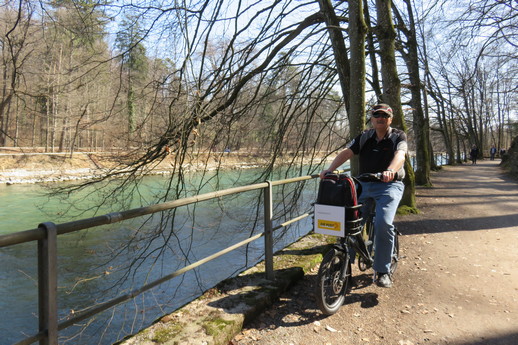
Albert Einstein and his first wife, Mileva, lived in Bern between 1902 and 1909 while he was struggling to gain employment before finally scoring a job as a clerk (third class) at the Bern patent office. They lived in a number of flats during this time. One (about 50 metres up the street from our apartment) has been preserved and is open to the public.
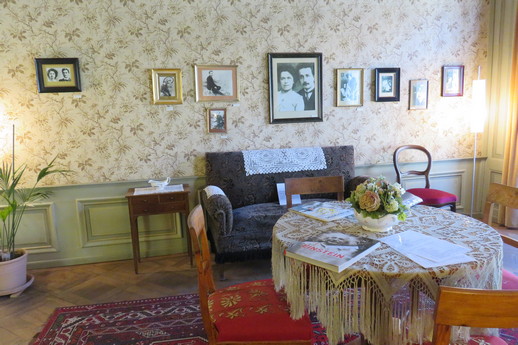
The old city has numerous fountains that are adorned with colourful wooden carvings. One of the most famous is the Kindlifresserbrunnen (Swiss German for Child Eater Fountain) and was created in 1545-1546. Kindli is a Swiss German diminutive for the German word Kind, meaning child. A literal translation of the name is therefore “Fountain of the Eater of Little Children”.
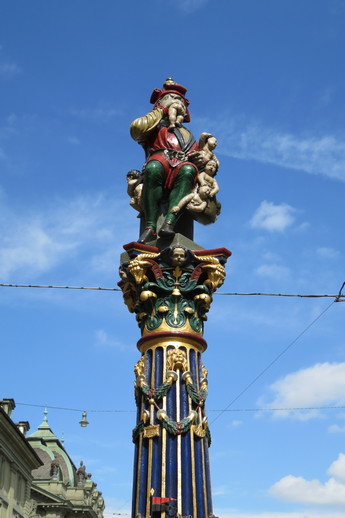
The fountain sculpture shows a sitting ogre devouring a naked child. Placed at his side is a bag containing more children. While many theories exist to explain what the sculpture represents, I think it’s the giant from Jack and the Beanstalk.
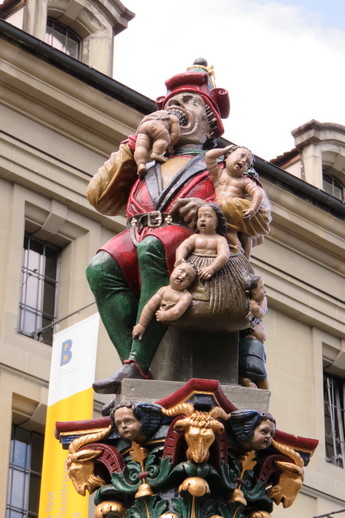
Chris climbed the tower of the cathedral (Munster) for some great photos across the old town and the River Aare which wraps around Bern. Look at the ant-like creatures in the next image and have a guess what they are?
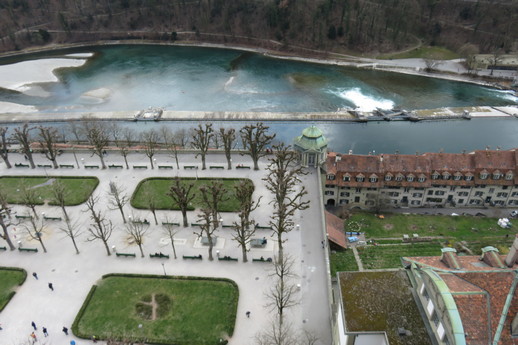
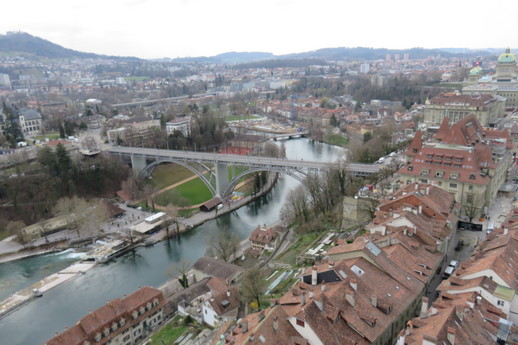
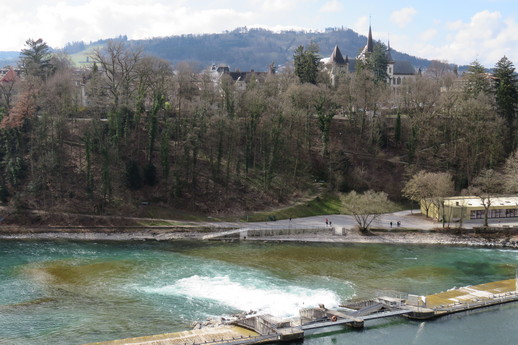
Einstein Museum
Bern played a significant part in Albert Einstein’s life and the local history museum has dedicated a whole floor to him – and we spent a day there.
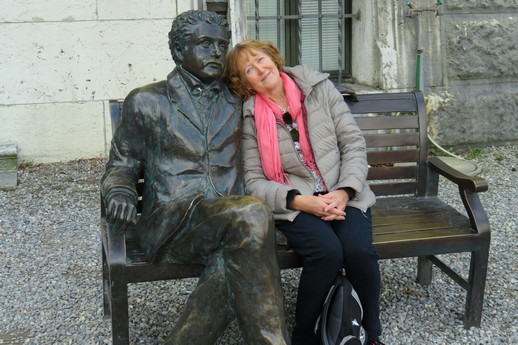
Albert Einstein is perhaps the most famous scientist in history. He was a true “rock star” scientist, known around the world for his theory of general relativity, which revolutionised our understanding of gravity. Not surprisingly, he was awarded the Nobel prize, but it wasn’t for general relativity. It was for a completely different work he published in 1905, the year known as Einstein’s annus mirabilis, or “Miracle Year”. Einstein was living in the flat shown above when these papers were published.
Each one of the 1905 papers was a revolutionary work that changed our understanding of the universe. None of them were about gravity and they covered a disparate range of topics. Einstein’s most famous work wasn’t published until 1915 (on General Relativity). The four papers that helped reveal the genius of Einstein were:
- Brownian Motion; which settled the debate over the existence of atoms, and laid the foundation for a new field of work known as statistical mechanics.
- The Photoelectric Effect; which demonstrated the particle aspects of light, and led to the quantum theory of matter. (Awarded 1921 Nobel Prize for Physics.)
- Special Relativity; which overturned a model of space and time that had stood for millennia.
- Mass-Energy Equivalence; which connected matter and energy, and led us to a true understanding of the stars.
In 2005, I attended a number of lecture / demonstrations at Newcastle University with Daniel as part of the celebration of the “World Year of Physics” in recognition of the 100th anniversary of Albert Einstein’s “Miracle Year” and the subsequent advances in the field of physics.
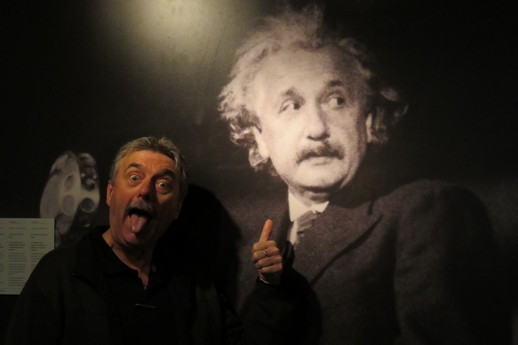
We also visited the Museum of Fine and Contemporary art. The fine art selection was modest (limited) and the contemporary art more extensive than should be legally allowed in a democracy. I was spellbound(?) by the noiseless video of a woman walking along a riverbank in what looked like an out-take from Monty Python’s Ministry of Silly Walks. Sorry – this crap doesn’t connect with me.
We finished our city walk with visits to a number of gardens and terraces where views of distant snow capped peaks were plentiful.
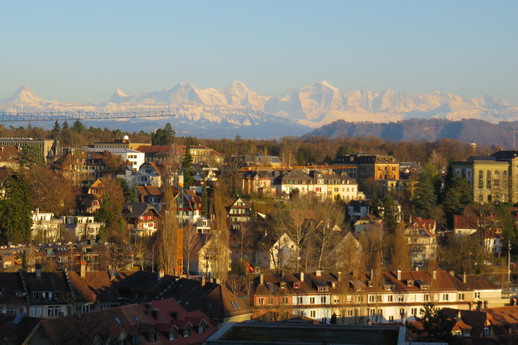
Tomorrow we are going to visit Montreux for the day to conduct experiments to determine whether smoke and water are truly immiscible.